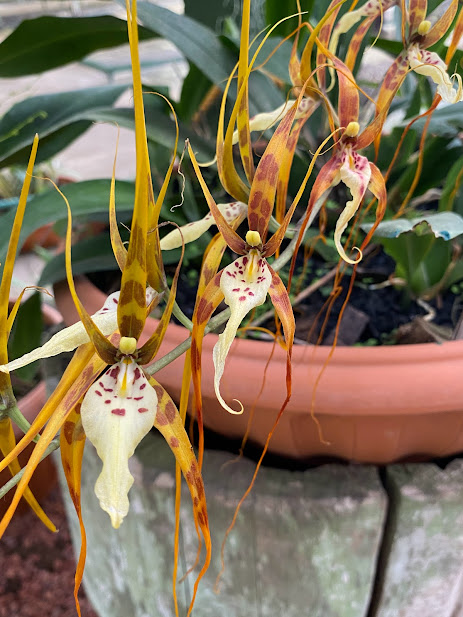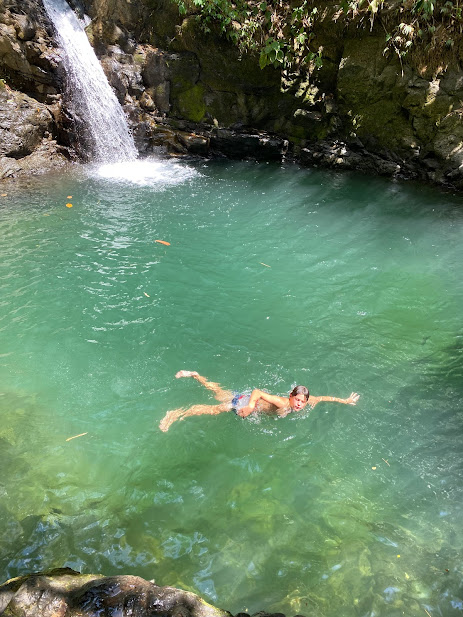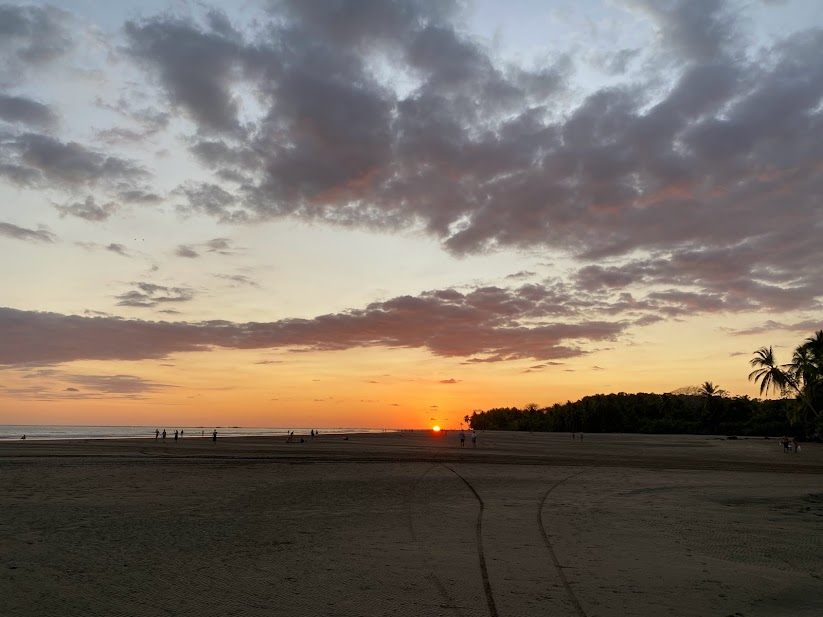Feb 27: Cartago, Uvita and Last CR days
- toddvandy
- Feb 28, 2023
- 5 min read
Before our friend Vale left at the beginning of February back to Argentina, we all visited the city of Cartago and surrounding area together. We drove up to Mount Irazu Volcano and toured properties of a well known Costa Rican family. After Vale left we took one last trip down south to Uvita and Corcovado National Park. On February 28th, we leave Costa Rica for Oaxaca Mexico. Adios Costa Rica! Thanks for the memories.
Parker and Drion at a local viewpoint.

Our first stop in Cartago (the ancient capital of Costa Rica) was Lankester Gardens, which were impressive and extensive.



purple bananas?




The Japanese gardens brought back nice memories from when we lived in Japan.

We were very impressed with their orchids.












This one's just hanging in mid air


Some of them were quite large

These look like they're about to say "hi"



The next day we met Monzi Figueres, who is like our landlord, helper and friend with dual US citizenship; and has a rich family history in Costa Rica. She stared by showing us around the humble home where she grew up in Cartago, and the horse ranch which is now run by her brother. Because of its history of training and racing it's the most sought after horse facility in Costa Rica.

Vale and the boys greeting different types of valuable horses

Breaking him in

Costa Rican champion pinto was fun to watch trot around the ring.

We visited her current home and family estate. The highlight was walking up to her mother in law's house. Cecilia is a well known artist showing off some paintings here.


Her home and studios is like a compound of several different domiciles and work spaces and gardens. Truly a magical place to experience and visit for us and Vale.

Paintings, pottery and textiles everywhere.

This is where Monzi's father spent much of his last years. The drawing is of her grandfather, Pepe Figueres Ferrer, the beloved first president of a democratic Costa Rica after leading a revolution and civil war in the 1940's; and abolishing the army among many other great feats to secure the freedoms of Costa Ricans.

These fruits were interesting and delicious.

Such a unique flavor can't describe.


The next day we visited Mt Irazu Volcano


Mt. Irazu Volcano is about 11,000 feet high. The drive up was beautiful, and it was no place for shorts and sandals.
Spaniards first colonized Cartago in 1561. In 1723 Irazu's violent eruption destroyed the city and the capital was moved to San Jose. The last major eruption was in 1963 which destroyed many communities leading to the death of 40 people. The parking attendant has everyone back their cars in for the purpose of a quick get-a-way.



Basilica de los Angeles is the home of Costa Rica's patron saint, La Negrita.


In 1635, as the story goes, there were some Afro-American slaves and indigenous communities of people living in and around Cartago with Spaniards and Euro-American populations. Apparently there was a geographical boundary line that darker skinned people (mostly poor,working class and slaves) were not allowed to cross and live beyond. There was a clear segregational class system which was carefully navigated by the catholic church at the time. A young indigenous lady visted the spring for water on the other side of this line and found a small stone carving of what looks like a black virgin Mary with baby Jesus. She took it home and the next day it was gone and reappeared back at the spring, on the side where darker skinned people are not allowed to live. This happened again and again and was confirmed by the local priest. The locals took it as a sign from God that all of the people should no longer be separated and they built a church at the site of this water spring. The spring still flows and the holy water can be collected for free. Paintings at the spring of different skin colored children together in the clouds.


macaws mate for life.

Paker and Amber helped out with teaching English by playing games with groups of young people who are part of the https://www.nowcr.org/ growing mission to educate, support and empower locals against the sex trade.

Low tide pools at our local playa Herradura.

Super Bowl Party, whoot!! Go refs!

We drove a couple hours south to visit Dominical, Uvita, Sierpe and Corcovado National Park. Dominical had the first and only laid back hippie vibe culture we've experienced here that we've heard used to be more prevalent years ago.

Hop on the boat!

Squirrel monkeys were fun to spot.

The boat made an almost beach landing here for us to hop off into Corcovado.


These bats chewed the edges of the leaf so it would drop on the sides to create an enclosed space for them to sleep.


Little hummingbird nest on the beach.

Can't get enough of the cool ficus roots.

Toucan grooming.

A giant croc chilling by the river.

This big guy didn't want to be found

We saw lots of great wildlife on our Corcovado tour, including spider monkeys.


The park has many entry points and next time we'll try to get to playa Sirena to catch some tapir, puma or jaguar.
There are around 300 stone spheres in this part of Costa Rica. They were made over 1000 years ago by the ancient Diquis people and are considered the national symbol of Costa Rica. These are the only vestiges of old culture that we know of. We missed the museum but caught these in a local park with some funky trees.


This steam engine roared in the 1930's to transport bananas and other goods around this part of CR.
Now palm tree oil plantations are big.
Such a uniqe tree with these fragrant flowers and brown cannonball type fruits.


Mariposa garden! Hard to catch these blue morpho mid flight.


Drion holds a butterfly near Monteverde 2 weeks prior. Hence the longsleeve shirt.


Catarata waterfalls on the edge of Uvita was our favourite. Easy to get to and cheap. Amber's climbing to the top on the ladder and getting ready to slide down


Amber, Parker and Todd all slid down the natural groove while Drion was content to jump and swim in the beautiful, refreshing water.



There were several pools in which to jump and play.

We hiked out to local whale tail beach in Uvita. That was a special place.




The sunsets in Costa Rica are second to some.
After a not fun 3 mile hike with earsplitting cicadas and buckets of sweat, we made it to Nauyaca waterfalls. It was massive with a large pool to swim around and explore.

Not easy to get to and expensive.

Haircut time! One affordable aspect of Costa Rica is the service industry: haircuts, car washes, house cleaning, etc.

A typical dirt road neighborhood shows how most locals live in small metal roof abodes.

Final thoughts on Costa Rica: It's a lovely country with beautiful people, a mountainous landscape reminiscent of Europe, and exceptional wildlife and habitat conservation.
I highly recommend visiting-- but living in a tropical climate in a developing country is not for us. We'll miss many things about it, won't miss other things, and we're ready to move on. Adios Costa Rica! Mexico here we come.



Comments